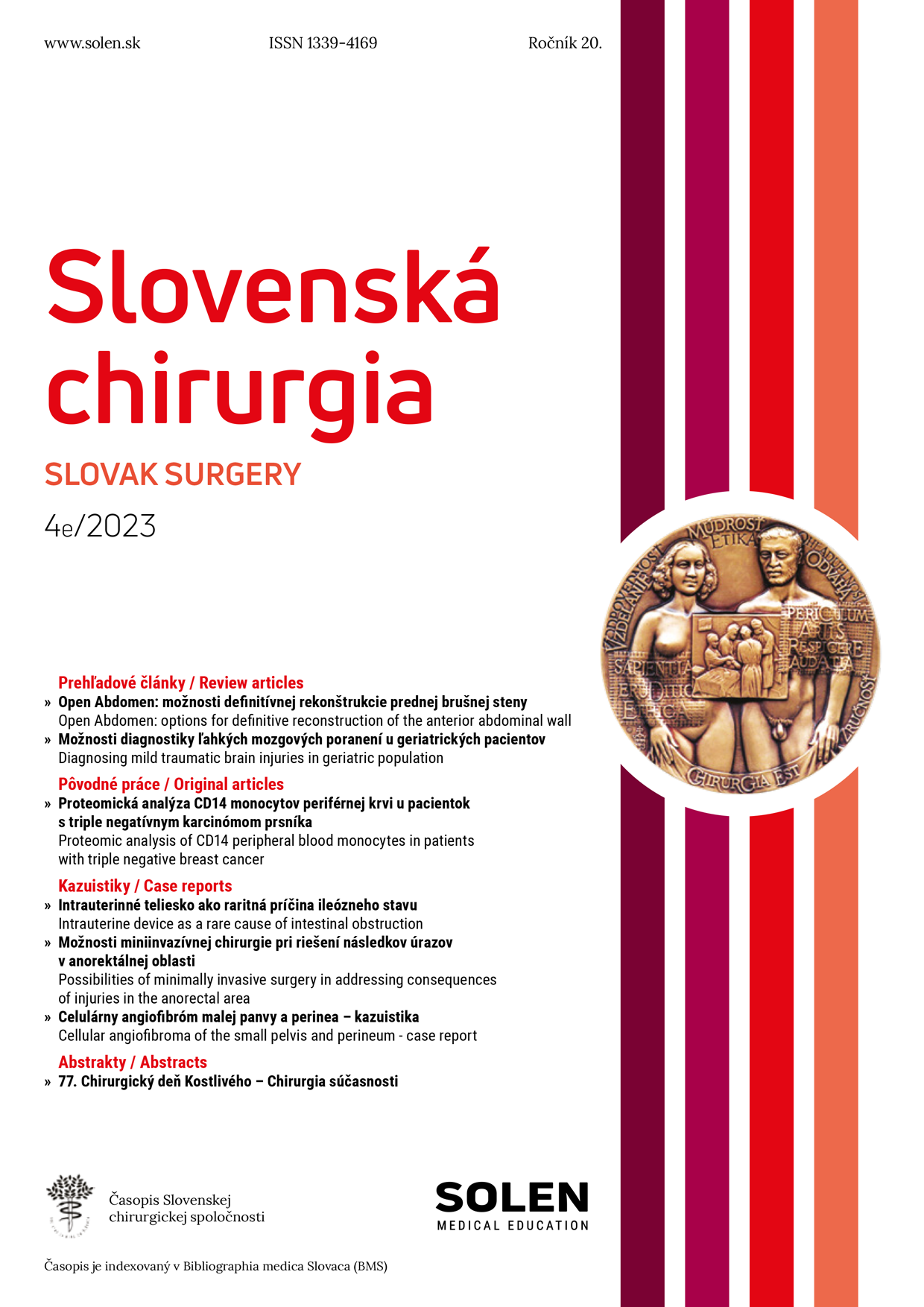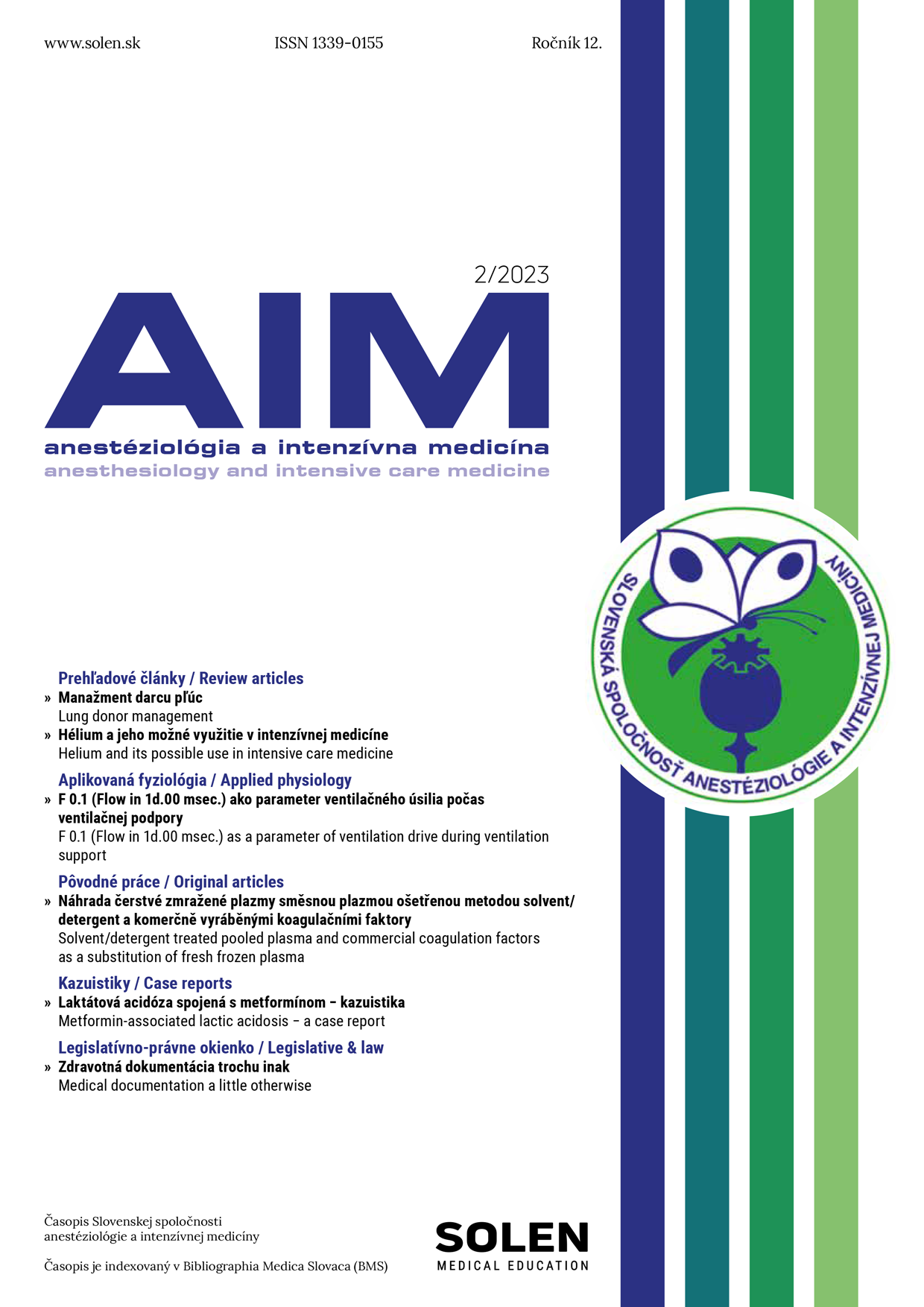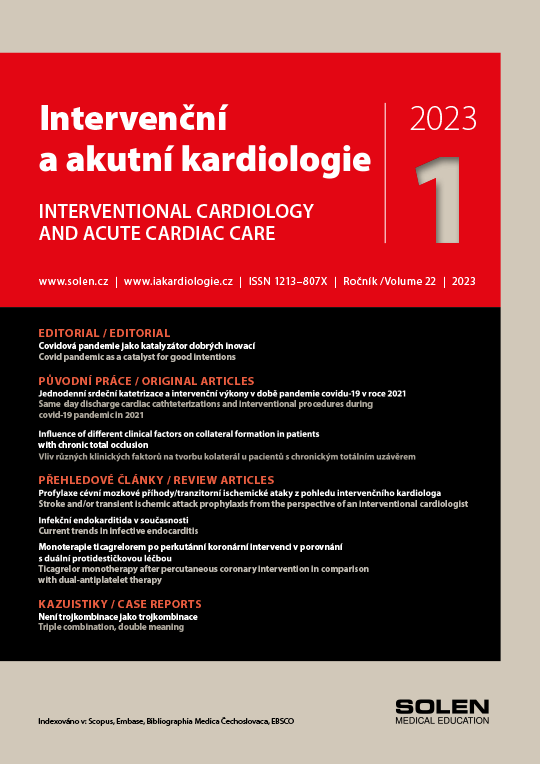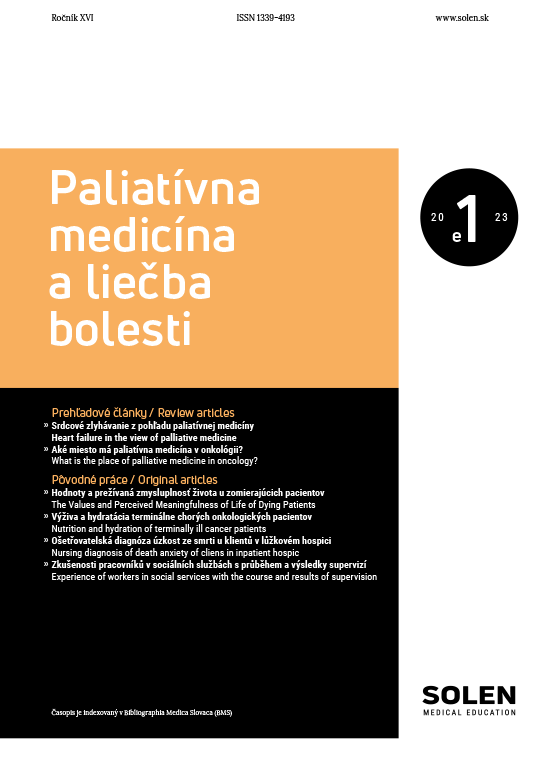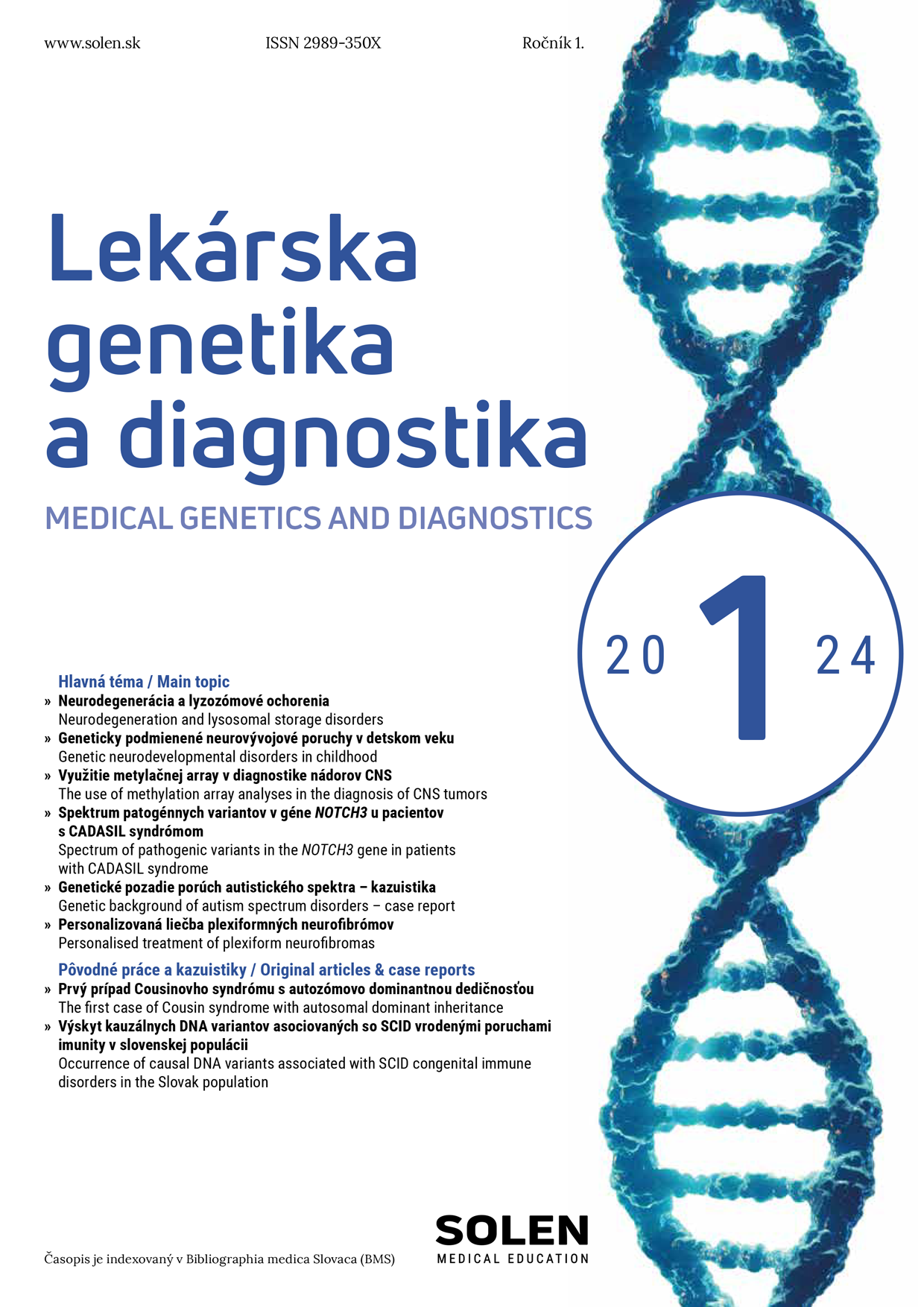Slovenská chirurgia 3-4/2018
Magnetická detekcia sentinelových uzlín pri karcinóme prsníka metódou SentiMag
MUDr. Marián Bakoš, PhD., MHA, MUDr. Tomáš Jankovič
Cieľom práce bolo porovnať novú metódu detekcie sentinelových lymfatických uzlín − „SentiMag“, so súčasným štandardom detekcie pomocou rádioizotopu v diagnostike karcinómu prsníka. SentiMag je metóda, pri ktorej sa na detekciu sentinelových lymfatických uzlín (SN) používa vodná suspenzia perparamagnetických častíc oxidu železa (SPIO). Metódy: Na biopsiu sentinelových lymfatických uzlín s karcinómom prsníka sme indikovali 3 pacientky. Uskutočnili sme lymfatické mapovanie štandardnou metódou a tiež pomocou látky Sienna+. Pri operácii sme sentinelové lymfatické uzliny preferenčne zisťovali systémom SentiMag, gama sonda bola použitá iba na kontrolu, či boli exstirpované všetky sentinelové lymfatické uzliny. Výsledky: Sentinelová uzlina bola zistená u všetkých 3 pacientok. Vo všetkých prípadoch bola zistená metastáza v sentinelovej uzline. Na základe našich výsledkov môžeme konštatovať súlad oboch metód, keď uzlina, ktorá vykazovala ex vivo najvyššiu hodnotu magnetizmu, bola súčasne uzlinou, ktorá vykazovala najvyššiu rádioaktivitu. Je veľmi pravdepodobné, že pri samostatnom použití metódy SentiMag, by sme dosiahli podobné výsledky ako pri použití štandardných metód. Záver: Metóda detekcie sentinelových uzlín pomocou systému SentiMag je v praxi použiteľná a v základných parametroch porovnateľná so súčasným zlatým štandardom − detekcie sentinelových uzlín pomocou rádioizotopu a gama sondy. Práca má zatiaľ informatívny charakter o možnosti novej metodiky v diagnostike SN pri karcinóme prsníka. Následne po širšom zavedení do klinickej praxe chceme vyhodnotiť väčší súbor pacientov.
Kľúčové slová: karcinóm prsníka, sentinelová lymfatická uzlina, biopsia sentinelovej uzliny, lymfoscintigrafia, SentiMag
SentiMag – the magnetic detection system of sentinel lymph nodes in breast cancer
Introduction: The aim of this study was to compare the feasibility of the new detection system of sentinel lymph nodes in breast cancer (SentiMag) and to compare it with standard method of detection with a radioisotope and a gamma-probe. Methods: Three patients with breast cancer were scheduled for sentinel lymphnode biopsy underwent standard lymphatic mapping with a radioisotope and also with the Sienna+ tracer. During the surgery, sentinel lymph nodes were identified preferably with the SentiMag system. The gamma-probe was used only at the end of the surgery to verify whether all sentinel lymphnodes had been harvested. Results: The sentinel lymph node was detected in all cases. Both methods agreed in 3 cases, i.e. the lymph node with the highest magnetic value ex vivo was the same node as the one with the highest radioactivity. A metastasis in the sentinel lymph node was found in every three patients. It is very likely that with the sole use of the SentiMag system, the results would have been identical to those of using the standard method with a radioisotope and the gamma-probe. Conclusion: The new magnetic detection method of sentinel lymph nodes (SentiMag) is feasible and clinically comparable to the gold standard method of detection with a radioisotope and the gamma-probe in patients with breast cancer. The new method could find its use not only in hospitals where the department of nuclear medicine is not available, but in all hospitals performing sentinel lymph nodes biopsies in breast cancer and possibly other types of cancer.
Keywords: breast cancer, sentinel node, sentinel lymph node biopsy, lymphoscintigraphy, SentiMag


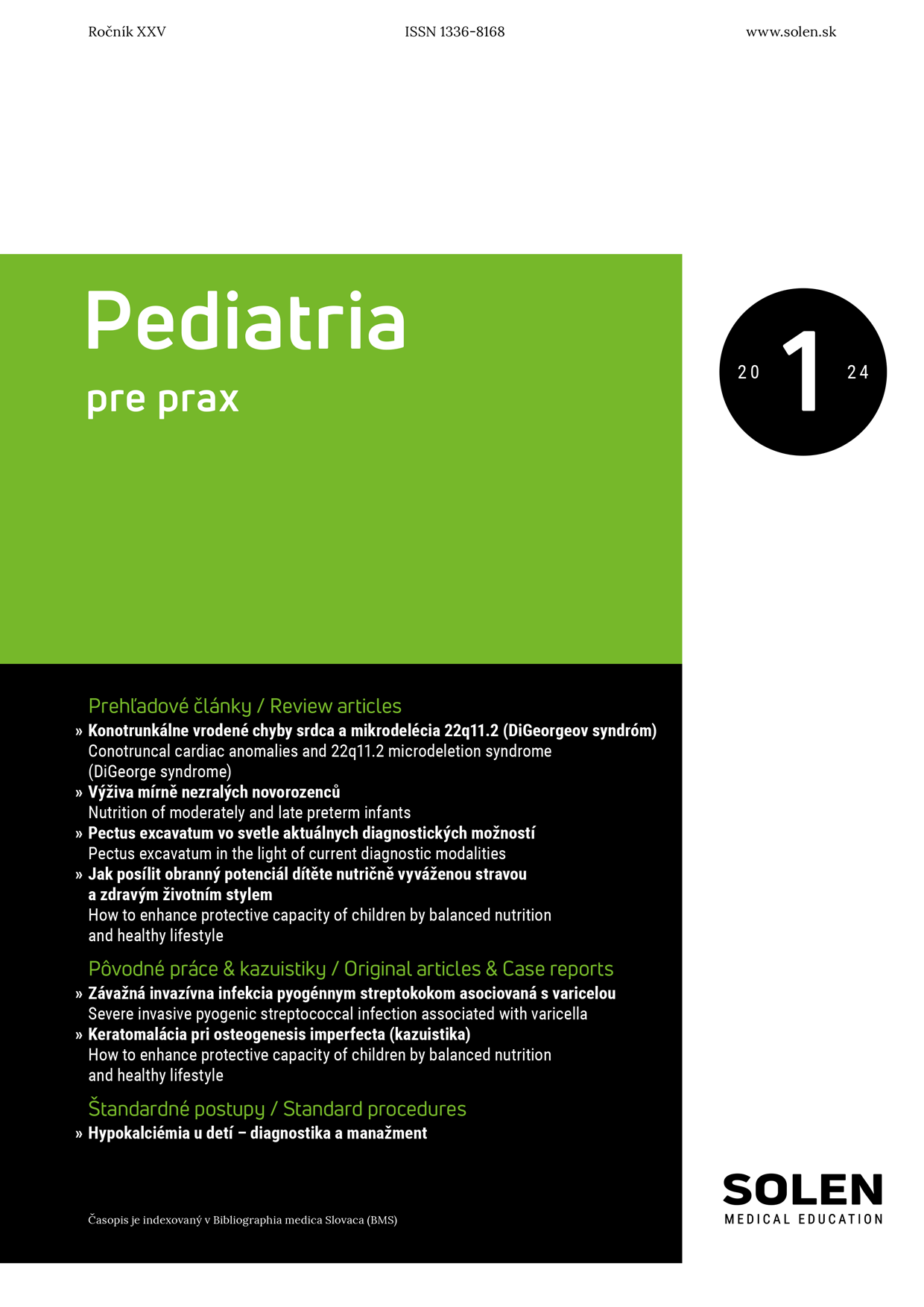
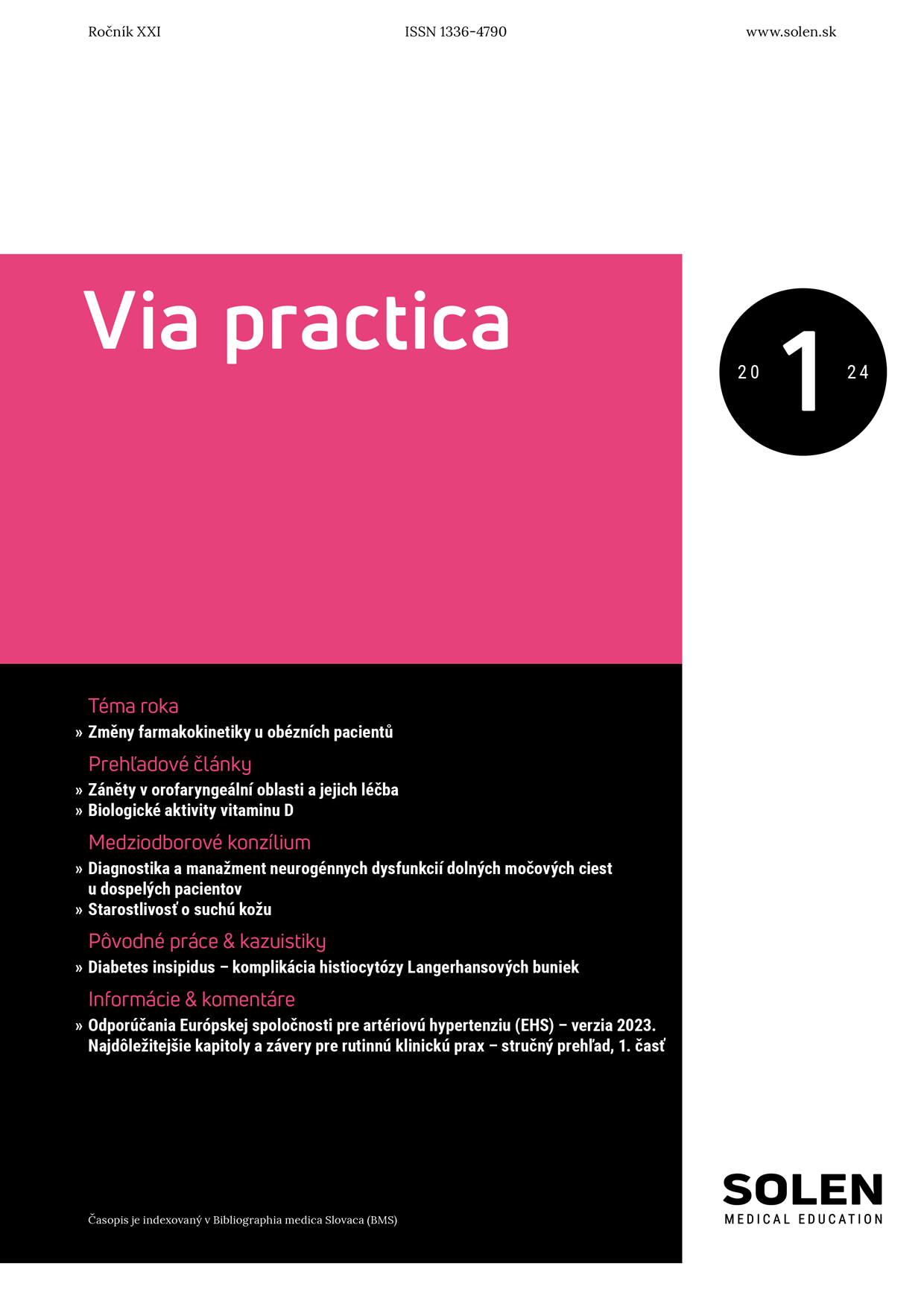
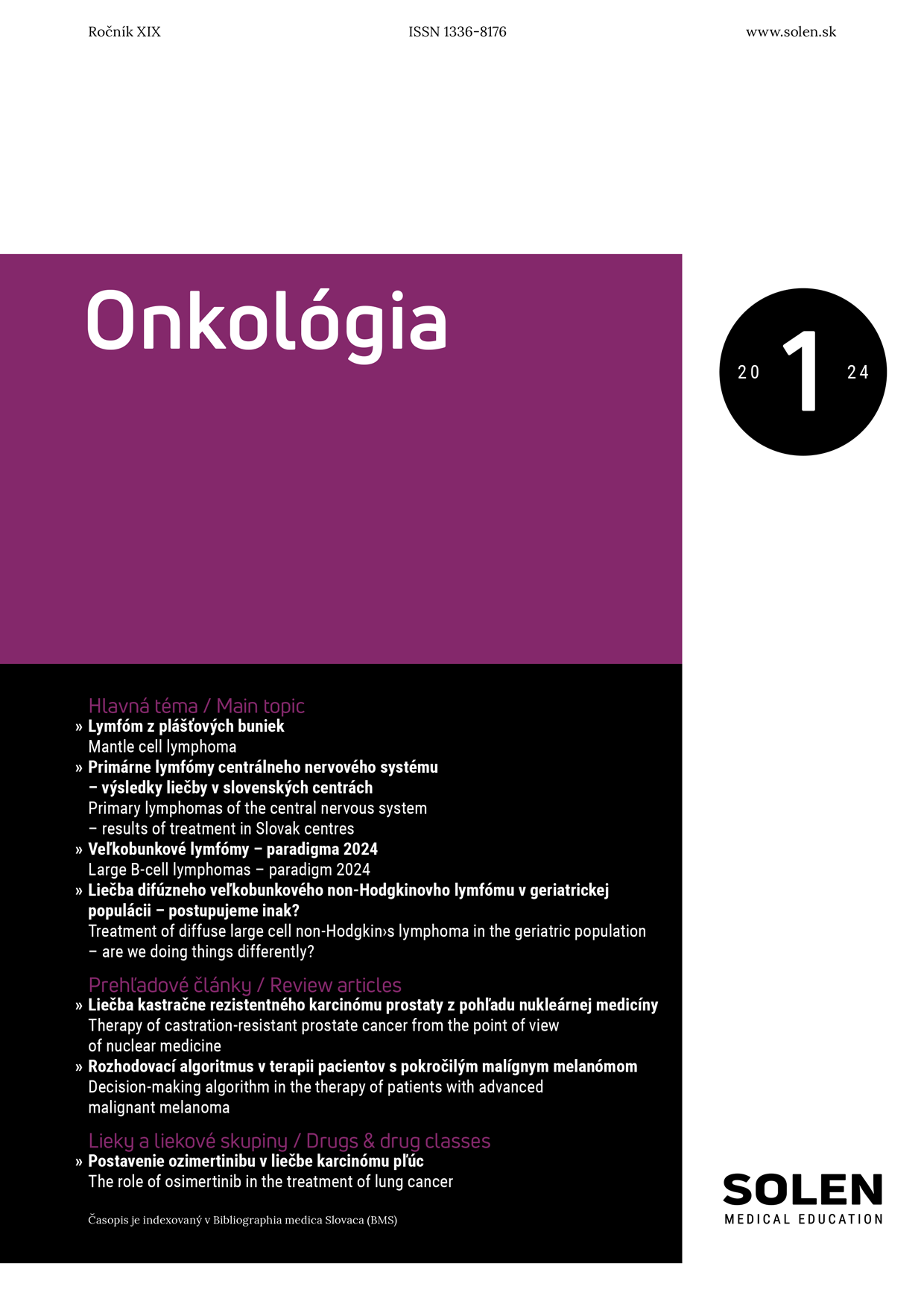
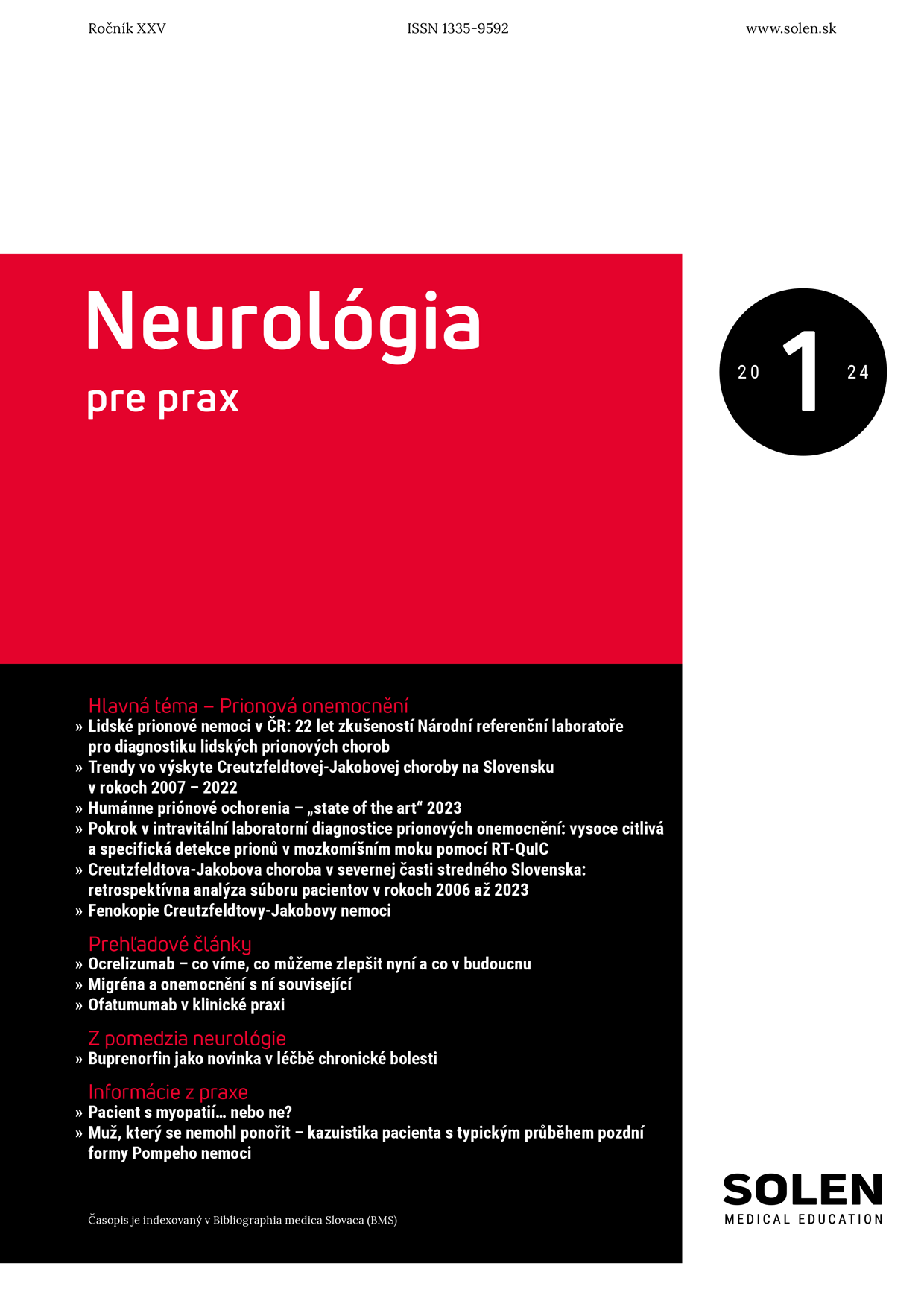
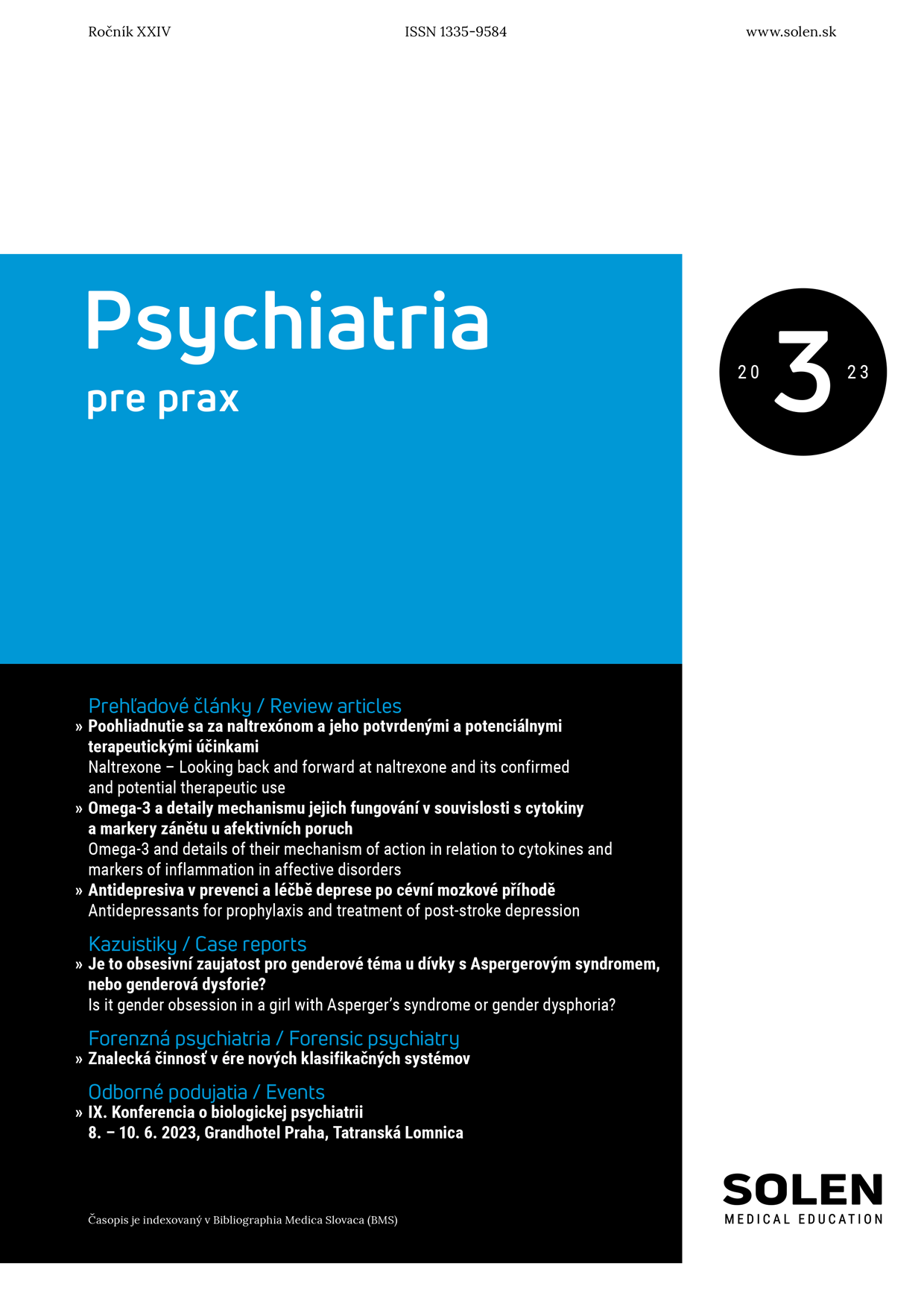
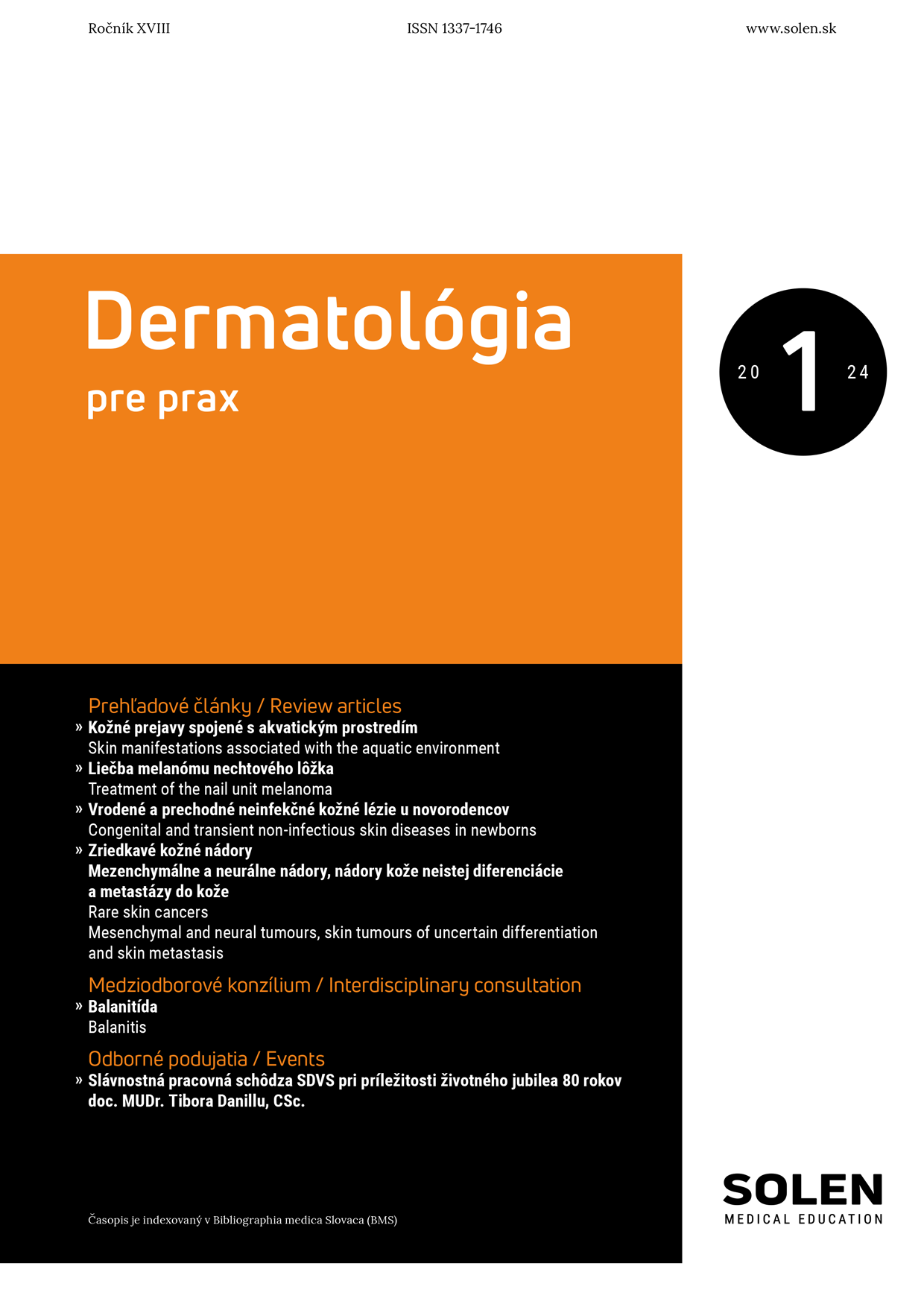
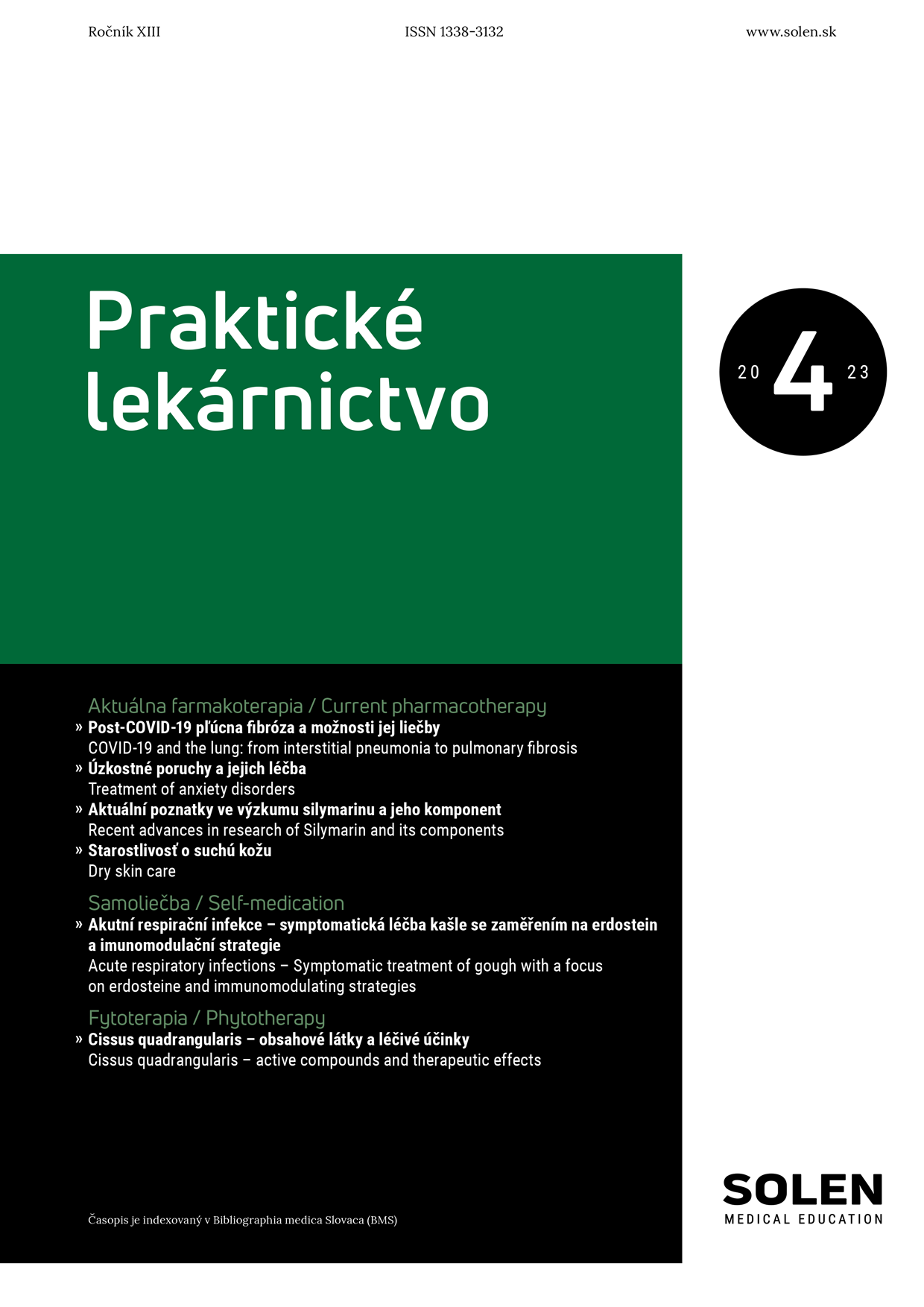
-1.png)
